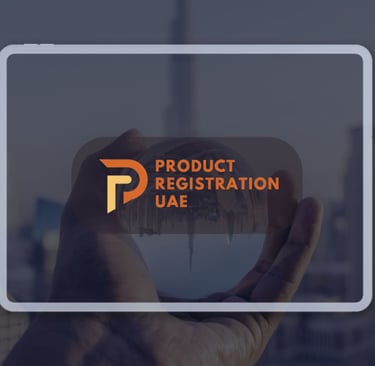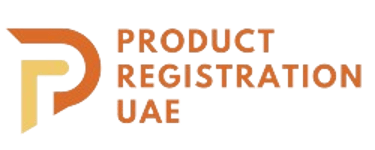7 Dubai Product Registration Secrets That Boost Approvals
Discover Dubai product registration secrets: seven proven fixes for pre-submission planning, correct classification, Arabic labels, and clean dossiers.
10/7/20254 min read


7 Dubai Product Registration Secrets
(That Actually Improves Approvals)
Updated: October 2025
Most refusals in Dubai aren’t about bad products—they’re about avoidable process errors.
After supporting more than 5,000 approvals across Dubai Municipality and the wider GCC, we’ve distilled the seven moves that consistently raise first‑time success and shave weeks off timelines.
This isn’t theory; it’s a field manual you can use now.
Why this matters
Dubai’s system rewards applicants who submit clean, locally aligned files the first time.
When labels, classification, and documents are precise, and when your responses are fast and complete, reviewers move quickly, queries are fewer, and launches stay on schedule.
Use the guidance below to set that rhythm.
Secret 1: Build a Pre‑Submission Strategy (before you touch the portal)
A large share of refusals begins long before submission: labels are drafted without checking UAE rules; dossiers are assembled without the right evidence; portal fields don’t match documents. Fix that upstream.
What to do in practice
Write a one‑page submission plan per SKU: the product’s classification and authority (Dubai Municipality or MOHAP), the exact certificates required (CFS, GMP/ISO where applicable), the ingredient list with percentages, any testing required, and which documents need legalization and Arabic translation.
Then draft the packaging in Arabic and English and review claims against UAE rules.
Finally, check that every field you’ll type into the portal precisely matches the file names, ingredient percentages, pack sizes, and artwork.
Outcome
A file that looks complete and coherent on day one—leading to fewer clarifications and faster approval.
Secret 2: Understand Risk‑Based Review (and show your controls)
Dubai Municipality applies a risk lens: higher‑risk categories or claims need clearer proof of control. Instead of waiting for queries, present your controls upfront.
What to include
Add a short “Risk & Controls” note to the dossier that lists known hazards, how you mitigate them (testing, supplier audits, batch traceability), and who responds if something goes wrong.
Name people and timelines. This creates immediate reviewer confidence and shortens back‑and‑forth.
Secret 3: Use Free Zones Strategically—not automatically
Free zones can compress licensing loops and simplify multi‑SKU rollouts, but they aren’t a magic shortcut. If your import chain becomes more complex, or relabeling steps multiply, you lose the advantage.
How to decide
Map your distribution flow end‑to‑end. If a free‑zone setup reduces re‑work (for example, centralized warehousing with compliant relabeling before domestic sale) and fits your importer relationships, use it.
If it adds steps or changes classification for your category, don’t.
Secret 4: Treat Localization as Compliance, not translation
Many first‑time files fail because machine‑translated Arabic misses mandatory phrases, INCI names are wrong, or claims imply medical effects. Localization is a compliance function.
Make your labels reviewer‑ready
Have a human translate and proofread Arabic on the outer pack and any leaflet. Use INCI for cosmetics and correct local naming for actives and additives.
Mirror warnings, storage conditions, allergens, net content, and shelf‑life format across Arabic and English.
If a consumer can’t understand the pack in Arabic at a glance, expect questions—or a refusal.
Secret 5: Add Sustainability Signals that build trust
Regulators increasingly look for credible sustainability cues, especially on packaging. Thin marketing claims create friction; concise evidence speeds reviews.
What to show
Attach a one‑page Sustainability Annex per SKU with packaging recyclability statements, material sourcing notes, and proof for any eco‑claims (logos, certificates, or supplier attestations). Keep it factual and easy to scan.
Secret 6: Horizon‑scan and prepare a Plan B
Rules evolve—especially around claims, actives, and label format. Teams that watch updates quarterly and pre‑draft alternatives move faster when a rule changes mid‑project.
Your cadence
Track circulars from Dubai Municipality, MOHAP, and MoIAT/ESMA. Keep a watchlist of at‑risk claims and ingredients. For each risk, prepare a “Plan B” (a softer claim, a label reflow, a minor reformulation) that you can activate without re‑designing the entire file.
Secret 7: Make your file crisis‑ready
A recall or field‑safety question isn’t just post‑market; reviewers often ask how you would handle issues. If you show that thinking now, you appear lower risk.
What to include
A concise recall/field‑safety plan, a post‑market surveillance outline, named contacts, and a 48‑hour response service level. Professionalism here can reduce queries and speed final sign‑off.
Common category pitfalls (learn from patterns)
Cosmetics & personal care
INCI mismatches, undeclared fragrance allergens, therapeutic‑style claims, and missing Arabic importer details.
Supplements & nutraceuticals
Dosage and serving sizes that imply therapy, missing MOHAP warnings, weak evidence for actives and claims.
Food & beverage
Shelf‑life format inconsistencies, additive naming not in local form, and allergens not mirrored in both languages.
Detergents & disinfectants
Wrong hazard phrases or pictograms, SDS not localized to UAE, and missing storage/disposal statements.
Q&A (for quick customer answers)
How do I register with Dubai Municipality?
Confirm the correct classification and authority, localize labels in Arabic, assemble a UAE‑ready dossier (CFS, GMP/ISO where needed, ingredient percentages, tests, legalized documents), and submit via the DM portal. A local specialist accelerates responses and reduces queries.
Why do Dubai registrations fail?
Most failures stem from wrong classification, incomplete documentation, and non‑compliant labels or claims. A structured pre‑submission audit prevents the majority of refusals.
How long does it take?
Clean dossiers are typically completed in four to eight weeks. Add time for legalization, testing, or complex categories like devices.
What to track (so you keep improving)
First‑time approval rate, number of authority queries per SKU, average query‑resolution time, mismatch rate between portal fields and documents, and post‑approval changes per quarter. These metrics tell you where to tighten your process.
Your next step
Run a pre‑submission audit on your top three SKUs this week. If you want a second pair of eyes, our team can review labels, classify correctly, assemble a clean dossier, and manage the portal process end‑to‑end.
Use the chatbot (bottom‑right) or contact us to start.
Success Numbers That Speak
94% first-time approval rate for prepared clients
67% faster registration timeline
89% savings on resubmission fees
This article is authored by Product Registration UAE’s regulatory strategy team, with over 10 years of experience in the UAE and GCC product approvals.
💡 Ready to Transform Your Registration Process?
Take advantage of our proven expertise and comprehensive support services.
Contact us or use our Chatbot at the bottom right corner
Further Readings:
Explore more insights on MENAT's Regulatory Digital Future
Stay compliant with insights from Why Early Regulatory Intelligence Matters
If your product fits more than one category, read this guide on Hybrid product classification in the UAE before you submit.
Assorted beverages and packaged foods symbolizing UAE sugar-based excise tax compliance for 2026.


